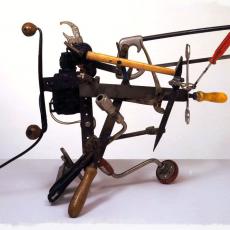Compose tips
- Web page addresses and e-mail addresses turn into links automatically.
- Lines and paragraphs are automatically recognized. The <br /> line break, <p> paragraph and </p> close paragraph tags are inserted automatically. If paragraphs are not recognized simply add a couple blank lines.
Allowed HTML tags: <a> <em> <i> <strong> <b> <u> <cite> <code><ul> <ol> <li> <dl> <dt> <dd> <blockquote> <p> <br> <span> <div> <img> <sub> <sup> <strike>
This site allows HTML content. While learning all of HTML may feel intimidating, learning how to use a very small number of the most basic HTML "tags" is very easy. This table provides examples for each tag that is enabled on this site.
For more information see W3C's HTML Specifications or use your favorite search engine to find other sites that explain HTML.
Tag Description You Type You Get Anchors are used to make links to other pages. <a href="http://www.workerscontrol.net">workerscontrol.net</a>workerscontrol.net Emphasized <em>Emphasized</em>Emphasized Italicized <i>Italicized</i>Italicized Strong <strong>Strong</strong>Strong Bolded <b>Bolded</b>Bolded Underlined <u>Underlined</u>Underlined Cited <cite>Cited</cite>Cited Coded text used to show programming source code <code>Coded</code>CodedUnordered list - use the <li> to begin each list item <ul> <li>First item</li> <li>Second item</li> </ul>- First item
- Second item
Ordered list - use the <li> to begin each list item <ol> <li>First item</li> <li>Second item</li> </ol>- First item
- Second item
Definition lists are similar to other HTML lists. <dl> begins the definition list, <dt> begins the definition term and <dd> begins the definition description. <dl> <dt>First term</dt> <dd>First definition</dd> <dt>Second term</dt> <dd>Second definition</dd> </dl>- First term
- First definition
- Second term
- Second definition
Block quoted <blockquote>Block quoted</blockquote>Block quoted
By default paragraph tags are automatically added, so use this tag to add additional ones. <p>Paragraph one.</p> <p>Paragraph two.</p>Paragraph one.
Paragraph two.
By default line break tags are automatically added, so use this tag to add additional ones. Use of this tag is different because it is not used with an open/close pair like all the others. Use the extra " /" inside the tag to maintain XHTML 1.0 compatibility Text with <br />line breakText with
line breakNo help provided for tag span. No help provided for tag div. No help provided for tag img. Subscripted <sub>Sub</sub>scriptedSubscripted Superscripted <sup>Super</sup>scriptedSuperscripted No help provided for tag strike. Most unusual characters can be directly entered without any problems.
If you do encounter problems, try using HTML character entities. A common example looks like & for an ampersand & character. For a full list of entities see HTML's entities page. Some of the available characters include:
Character Description You Type You Get Ampersand && Greater than >> Less than << Quotation mark "" Paging Help
Break long pages into smaller ones by means of a page break tag (e.g. <!--pagebreak-->):
First page here. <!--pagebreak--> Second page here. <!--pagebreak--> More pages here.
Automatic page breaking based on character or word count is also supported.




